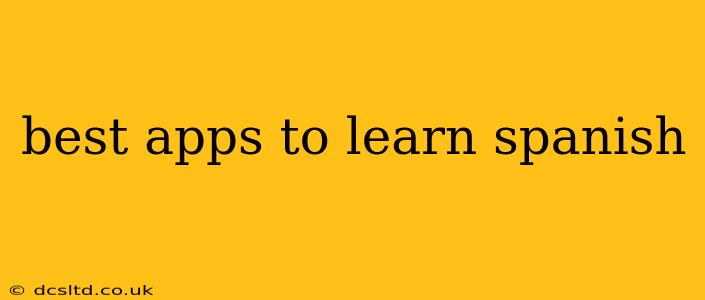Learning a new language can be a rewarding journey, opening doors to new cultures and experiences. If Spanish is your target language, you're in luck! Numerous apps cater specifically to Spanish learners, offering various approaches and features. Choosing the right app depends on your learning style, budget, and goals. This guide will explore some of the best apps to learn Spanish, helping you find the perfect fit for your needs.
What Makes a Great Spanish Learning App?
Before diving into specific apps, let's consider what makes a truly effective language learning tool. A top-tier app should:
- Offer structured lessons: Progressing through well-designed curriculum is crucial for building a solid foundation.
- Provide engaging content: Learning should be enjoyable! Multimedia elements, interactive exercises, and gamification can significantly improve motivation and retention.
- Include personalized feedback: Knowing where you're excelling and where you need improvement is essential for focused learning.
- Encourage active recall: Regular practice and testing are key to memorizing vocabulary and grammar rules.
- Offer diverse learning methods: Combining various learning approaches—like listening, speaking, reading, and writing—leads to more effective learning.
Best Apps to Learn Spanish: A Detailed Review
Now, let's delve into some of the most popular and effective Spanish learning apps:
Duolingo: The Gamified Approach
Duolingo is arguably the most well-known language learning app. Its gamified approach uses points, streaks, and leaderboards to keep learners motivated. Lessons are bite-sized and easy to fit into busy schedules. While it's great for vocabulary and basic grammar, its focus on gamification might not suit everyone.
Pros: Free (with optional paid subscription for added features), user-friendly interface, gamified learning. Cons: Can be repetitive for some, lacks in-depth grammar explanations.
Babbel: Structured Lessons and Real-World Conversations
Babbel takes a more structured approach, focusing on building a solid understanding of grammar and vocabulary through carefully crafted lessons. It emphasizes realistic conversational scenarios, preparing you for real-world interactions. The app offers a free trial, after which a subscription is required.
Pros: Structured lessons, focus on practical conversation, professional voice actors. Cons: More expensive than some free options, less gamified than Duolingo.
Rosetta Stone: Immersion and Speech Recognition
Rosetta Stone uses an immersion-based approach, minimizing the use of your native language to encourage faster learning. Its speech recognition technology provides immediate feedback on pronunciation. It's a more expensive option but offers a comprehensive and immersive learning experience.
Pros: Immersion method, advanced speech recognition, detailed lessons. Cons: Can be challenging for beginners, requires a subscription.
Memrise: Mnemonics and Community Features
Memrise incorporates mnemonics and memorable images to help users retain vocabulary. It also features a strong community aspect, allowing users to share and create learning materials. Like other apps, Memrise offers a free version with limited features and a paid subscription for full access.
Pros: Mnemonic techniques, community features, diverse learning materials. Cons: Can be overwhelming for beginners, relies heavily on memorization.
Drops: Visual Learning and Focus on Vocabulary
Drops uses a visually rich approach, focusing primarily on vocabulary acquisition. Its minimalist design and short, focused lessons are ideal for those who prefer quick learning sessions. The free version has limited daily use, requiring a paid subscription for unlimited access.
Pros: Visually appealing, focused on vocabulary, short lessons. Cons: Limited grammar instruction, free version has usage restrictions.
Which App Is Right for You?
The "best" app depends on individual learning preferences and goals. Consider these factors:
- Your budget: Some apps are entirely free, while others require paid subscriptions.
- Your learning style: Do you prefer gamification, structured lessons, or an immersive approach?
- Your proficiency level: Some apps are better suited for beginners, while others are more suitable for intermediate or advanced learners.
Try out free trials or free versions of different apps to determine which one best suits your learning style and goals. Remember, consistency is key, so choose an app that you find engaging and enjoyable to use. Good luck with your Spanish learning journey!
